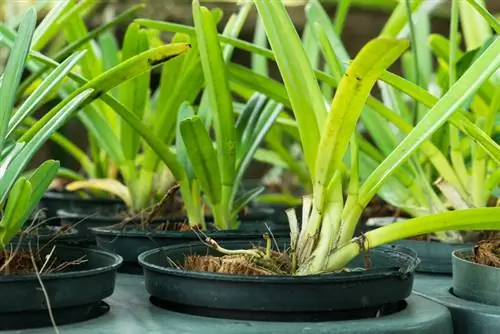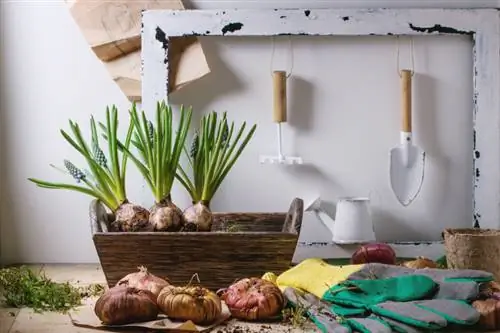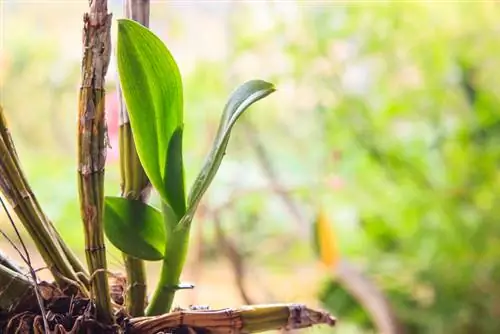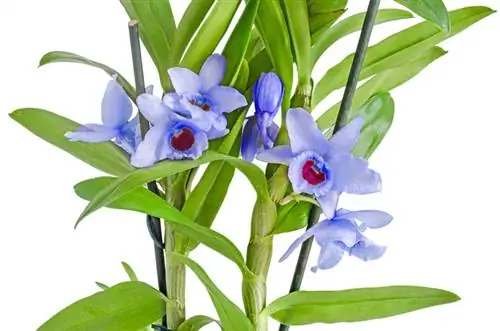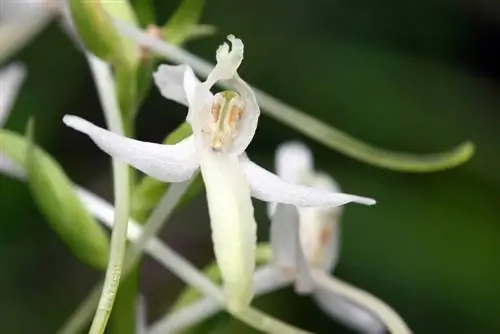- Author admin [email protected].
- Public 2023-12-16 16:46.
- Last modified 2025-06-01 06:02.
The Dendrobium nobile is one of the most child-friendly orchid species. Clever orchid gardeners know how to use this fact to easily propagate a grape orchid. These instructions explain how to properly cut and care for a cutting.
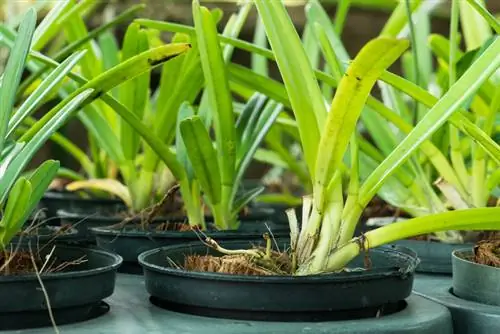
How to propagate a Dendrobium Nobile orchid?
To propagate a Dendrobium Nobile orchid, cut off the child with about 2 cm of the lower bulb if it has several aerial roots and at least 2 leaves. Plant the offshoot in fine-crumb pine bark soil or a coconut fiber-expanded clay mix and care for it in a heated mini greenhouse or under a transparent hood.
Mother plant and child separate at the right time - this is how it works
If small aerial roots and leaves sprout along a strong pseudobulb instead of a bud, patience is initially required. The longer a child stays connected to its mother plant, the stronger it starts into orchid life. You can read how to recognize the right time and carry out the separation cut professionally here:
- Cut off a cutting with several aerial roots and at least 2 leaves
- Wait until the lower part of the bulb begins to yellow
- Cut off the child 2 cm below the aerial roots
By cutting off the daughter plant including a small piece of the bulb, the prospects for further growth improve. A disposable scalpel (€9.00 on Amazon) from the pharmacy has proven to be a useful cutting tool for precise incisions. Here it can be largely ruled out that there are pathogens on the blade.
Planting and caring for Kindel - How to do it right
Cut at the ideal time, the child of a Dendrobium nobile has all the properties of its mother plant. The care program after the separation cut primarily aims to ensure rapid growth of additional roots and leaves. This is how it works:
- Pot Kindel in fine crumbly pine bark soil or a mix of coconut fibers and expanded clay
- Spray substrate and offshoots with soft water
- Care in a heated mini greenhouse or under a transparent hood
- Place in a partially shaded location at temperatures around 25 degrees Celsius
Do not apply fertilizer until a fresh shoot of new leaves and aerial roots develops. Instead, spray the young plant regularly and ventilate it daily. Once the daughter plant has completely rooted through the growing pot, it is time to move to a transparent growing pot. From now on you can care for the young grape orchid like an adult plant.
Tip
If a child still doesn't bloom two years after propagation, it usually lacks the winter temperature reduction to induce flowering. Dendrobium orchids only produce their buds when the temperatures are reduced by 5 degrees Celsius from October onwards compared to the previous room temperature.

